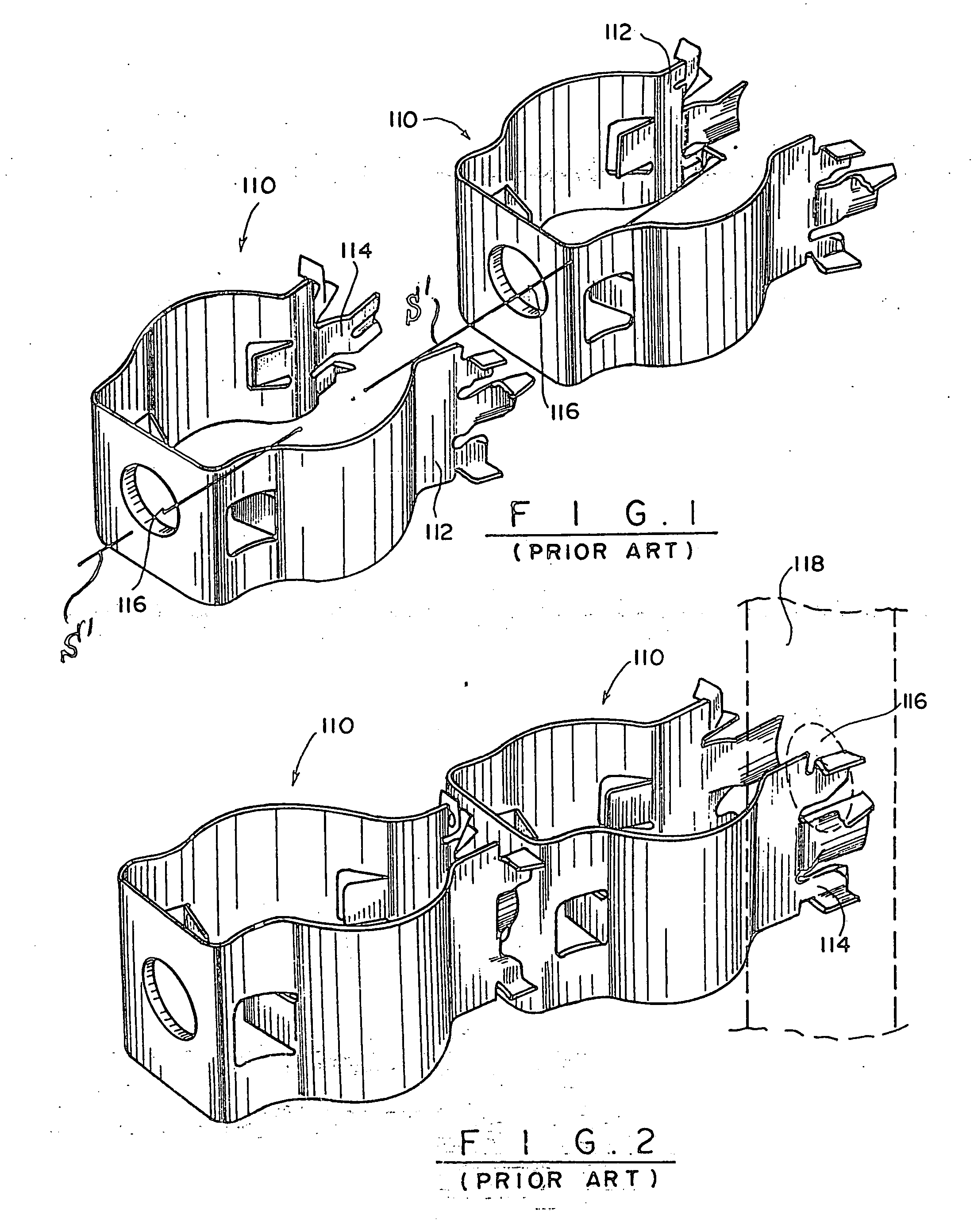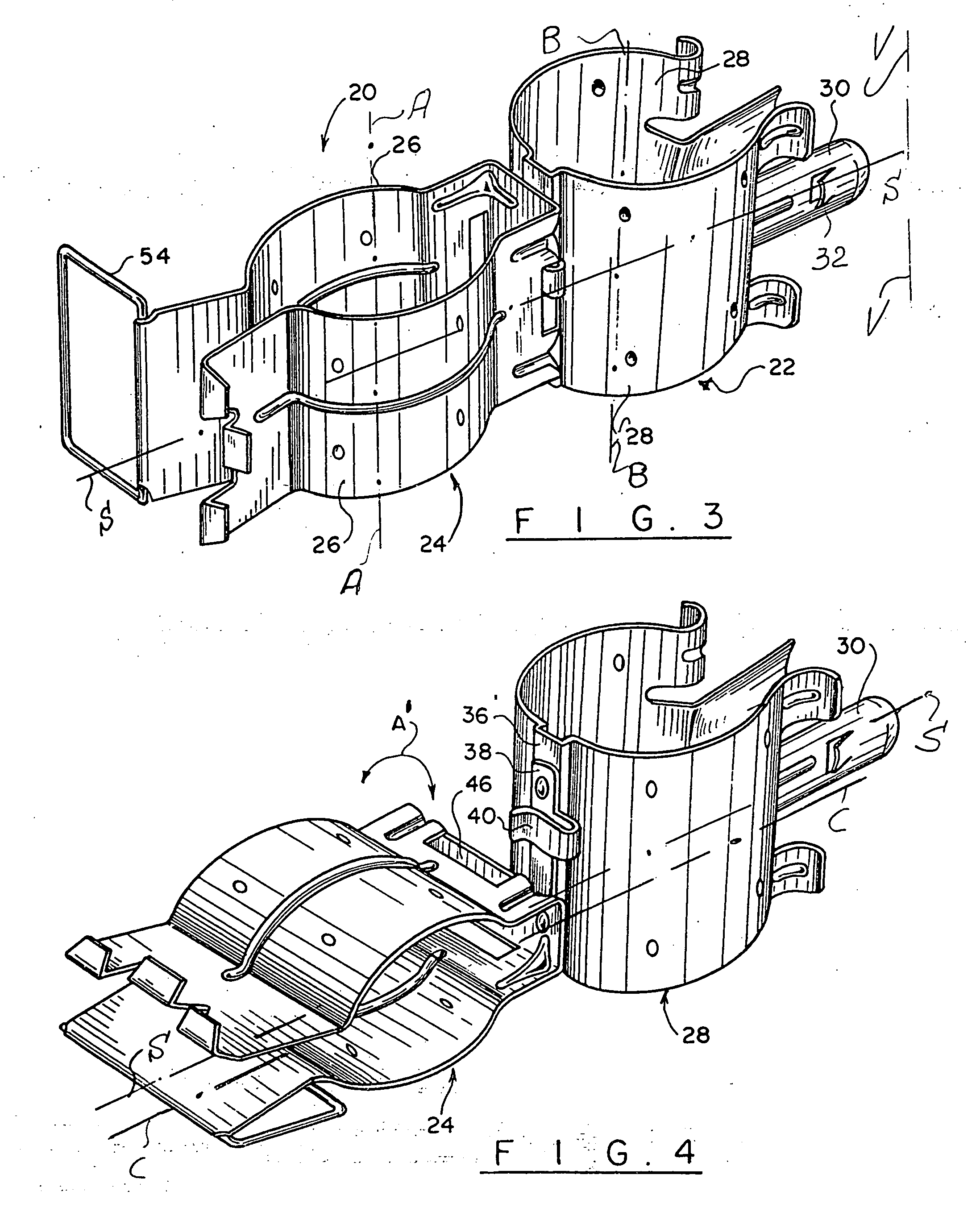Cable holder
a cable holder and cable technology, applied in the field of cable holder, can solve the problems of limited access to the inner hanger, insertion of the cable holder, and increase the number of transmission lines
- Summary
- Abstract
- Description
- Claims
- Application Information
AI Technical Summary
Benefits of technology
Problems solved by technology
Method used
Image
Examples
Embodiment Construction
[0023] Referring to FIGS. 3-4, the inventive cable holder 20 has at least one pair of coupled inner 22 and outer 24 hangers displaceable relative to one another along a direction “A”′ between deployed and installation positions as shown in FIGS. 3 and 4, respectively. In accordance with one inventive embodiment, the hangers 22, 24 rotate relative to one another about an axis C-C (FIG. 4), which is offset from an axis of symmetry S-S (FIG. 4) common to both hangers in the deployed position of FIG. 3. Accordingly, in the deployed position, the axis of symmetry S-S of both hangers 22, 24 extends substantially perpendicular to a longitudinal axis V-V of an antenna tower (not shown), which complicates access to a body 28 of the inner hanger 22 by a serviceman. To facilitate this access, the outer hanger 24 is designed to move so that the body 28 is conveniently exposed to the serviceman. The serviceman then applies a compressing force to the body 28, brings the fingers 30 together to ins...
PUM
 Login to View More
Login to View More Abstract
Description
Claims
Application Information
 Login to View More
Login to View More - R&D
- Intellectual Property
- Life Sciences
- Materials
- Tech Scout
- Unparalleled Data Quality
- Higher Quality Content
- 60% Fewer Hallucinations
Browse by: Latest US Patents, China's latest patents, Technical Efficacy Thesaurus, Application Domain, Technology Topic, Popular Technical Reports.
© 2025 PatSnap. All rights reserved.Legal|Privacy policy|Modern Slavery Act Transparency Statement|Sitemap|About US| Contact US: help@patsnap.com



